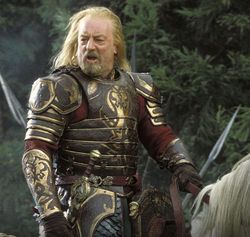Wintermark people
The Winterfolk were once three separate peoples: the Kallavesi, the Steinr and the Suaq. Although they unified years before they joined the Empire, they preserve the heritage that made each tradition strong. Which tradition you follow is not an accident of birth but a choice made by each Winterfolk child as they reach maturity. Just as one might be born a peasant and rise to become a Thane, so someone can be born to Steinr family and leave to follow the path of a Kallavesi mystic or journey with the Suaq as a scout. Children gravitate towards whichever tradition calls most strongly to them as they come of age.
All three traditions are equally respected, they are all crucial to the survival of the nation. Although a single tradition predominates in each territory of Wintermark – this is a consequence of landscape and history – members of all three traditions are found all across Wintermark. Most communities include members of all three traditions. The Winterfolk always use that term when talking to outsiders, to make the point about their unity. They no longer consider themselves three people, they are one people - the Winterfolk - but with three traditions.
The Winterfolk, and especially the Steinr, are expert craftsmen who take immense pride in the act of creation. They treat complex runic sigil-work as a necessary part of everything they make. They are perfectionists, who value quality over mass production, and their pieces are greatly prized and copied all over the Empire. While the stereotypical Winterfolk crafter is often thought of as a weapon or armour smith, they are also known for the expertise in civil and military engineering; their construction of great fortresses and other defensive structures; their delicately engraved jewellery and their practical alchemy.
Many Winterfolk have adopted the old Kallavesi belief in the Skein. Each person has a skein, a path down which that individual travels. Your passage along your path, your skein, is a single continuous journey even as you are born and reborn. It is wrong to say that things are predestined, like any path there are turnings that you can take. But some paths are much more auspicious than others. Divination through magic and studying omens allows the skilled shaman to discern the most favourable turns to make.
What binds the three cultures together into a strong nation is the idea of commitment to one’s choices. If you hunt the monsters of the icy wastes, let none escape you. If you design a fortress or a suit of armour, make it impregnable. If you go to war, be prepared to die for your cause. Everything you do is your choice and yours alone, and that is why you must stand by it, whatever the outcome may be.
Names
Traditional Steinr and Kallavesi names tend to fall into two patterns:
- {given name} {parent's name}sson or {given name} {parent's name}sdottir e.g. Hrothgar Arnesson, Adla Runasdottir
- {given name} ja {place} e.g. Aiko ja Sudenar, Eirik ja Kalpaheim (pronounced 'ya')
Traditional Suaq names are different – the Suaq are given single names of places or creatures around them, but if it is felt that they resemble one of the elders or the dead, or the mother dreams of a dead person, the child takes that person’s name. A Suaq child’s name can change a number of times before it settles.
Sample Names
- Rika Vanarsdottir
- Mimek ja Tanika
- Amaruq
Names are primarily Saxon in flavour for Steinr, Finnish for Kallavesi and Inuit for Suaq – although these have melded over the generations.
